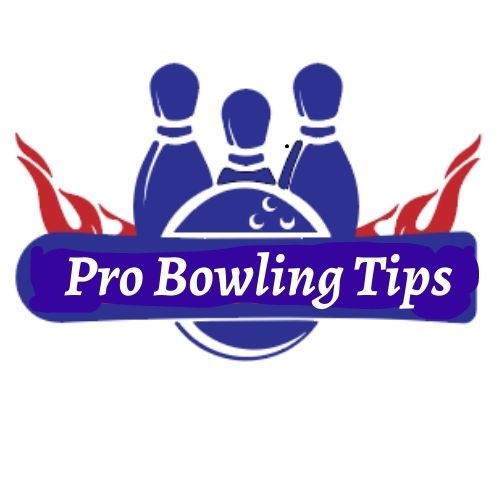How do you release a bowling ball? To release a bowling ball, ensure your thumb exits the ball first, followed by a controlled wrist rotation and finger release. This technique maximizes accuracy and power while throwing the ball.
Bowling is a sport that combines precision, technique, and sometimes a touch of flair. The release of the bowling ball is a critical aspect that can significantly affect your game. Mastering the correct release requires practice and understanding of the proper mechanics.
Releasing the ball with the right amount of rotation and speed can lead to more strikes and spares, improving your overall scores. It involves a blend of timing, grip, and arm motion to send the ball gliding smoothly down the lane. Whether you’re a beginner looking to understand the basics or an experienced bowler refining your technique, focusing on your release is an essential step towards bowling success.
The Anatomy Of A Bowling Ball Release
Mastering the art of releasing a bowling ball involves understanding its detailed anatomy. A seamless bowling ball release is crucial for accuracy and power. It’s not just about letting go of the ball; it involves precise timing, hand positioning, and an intuitive feel for the ball’s movement. In this post, we’ll dissect the critical elements of a bowling ball release to help bowlers enhance their game and achieve that perfect strike.
The Grip
The Grip
Getting the grip right is the first step to a successful release. The grip determines everything from the ball’s path to its rotation. Here are the key points to know:
- Conventional vs. Fingertip grip: Choose based on comfort and control.
- Fit is vital: Make sure the holes match your hand for a secure hold.
- Relaxed yet firm grip: Grip the ball without straining your hand muscles.
You’ll want to keep your wrist straight or slightly cupped to maintain control before the release.
Thumb and Finger Coordination
Thumb And Finger Coordination
The coordination between your thumb and fingers plays a pivotal role. Here’s how it works:
- Thumb exit first: As the arm swings forward, you let your thumb slip out of the ball slightly before the fingers.
- Fingers follow: The middle and ring fingers exit next, imparting rotation and lift to the ball.
- Smooth sequence: Ensure a quick, fluid motion for the best rotation.
Practice timing for the thumb and fingers to exit to perfect the coordination.

Credit: www.ebay.com
Perfecting Your Stance And Approach
Striking with precision begins long before the bowling ball reaches the pins. It starts with the stance and approach. This section explores key fundamentals in perfecting both elements, providing a surefire way to improve your game. Get ready to knock down those pins with greater consistency.
Body Positioning
Body positioning forms the cornerstone of a great bowling game. A solid stance sets the stage for a smooth and controlled approach. Here’s how to nail it:
- Align your shoulders with the pins.
- Keep your feet shoulder-width apart.
- Bend your knees slightly for stability.
- Maintain a straight spine, tilting forward at the hips.
- Balance your weight on both feet equally.
Proper body alignment provides the framework for a powerful and precise release. It ensures a consistent approach in each roll.
Approach Technique
Mastering the approach technique is key to directing the bowling ball with accuracy. Here’s a step-by-step guide to perfecting your approach:
- Stand with your back to the foul line, holding the ball in your starting position.
- Look ahead at your target point on the lane, not down at your feet.
- Initiate the approach by stepping forward with your dominant foot.
- Use a four-step or five-step approach, depending on your comfort level.
- Sync your arm swing with your steps for a fluid motion.
- Approach the foul line with a smooth, even pace and gently swing the ball forward.
Each step of your approach should be deliberate and confident. This ensures the most controlled and powerful ball release.
The Swing And Its Importance
Mastering the bowling ball release begins with a perfect swing. The swing is crucial because it controls the ball’s speed, direction, and spin. A consistent swing leads to a controlled release and heightened precision. Let’s delve into the mechanics and dynamics that are key to an effective swing and ultimately, a powerful release.
Backswing Mechanics
The backswing sets the stage for a successful delivery down the lane. During the backswing, your arm must move smoothly and steadily as it guides the ball backward. Keep the following in mind:
- Avoid tension: Relax your muscles, keeping the motion fluid.
- Maintain a straight arm: This ensures consistency in your swing.
- Control the height: Do not let the ball swing too high, which can affect balance.
Precision in the backswing translates to control during release. Focus on keeping your wrist firm and the ball close to your body.
Downswing Dynamics
The transition from backswing to downswing is all about timing. As you move the ball forward, consider these elements:
- Begin your downswing in sync with your footwork.
- Let gravity assist the ball’s descent, minimizing force.
- Prepare your wrist and fingers for release position.
A smooth downswing culminates in an explosive release. It should feel like a natural continuation of your forward motion. Practice perfecting this transition, and watch as your scores improve.
The Release Point
The Release Point in bowling is critical for scoring. It’s the moment when the ball leaves your hand and begins its journey down the lane. Perfecting the release point is essential for accuracy and power. Let’s break down the mechanics to help you improve your game.
Timing The Release
Timing is everything in bowling. The perfect release happens when the sliding foot completes its slide. The arm swing should bring the ball to the lowest point next to the ankle. Here’s how to sync your movements:
- Approach end: Begin the release as the heel touches the lane.
- Flat spot: Aim for a flat spot at the end of the slide for a stable release.
- Thumb exit: Let your thumb leave the ball slightly before the fingers for a clean release.
Velocity And Rotation
Velocity and rotation determine the ball’s path and its reaction on the pins. A ball that is too fast may not hook properly, while too slow can lack hitting power. An ideal release balances both. Here are the keys:
- Wrist position: Keep your wrist firm and don’t break it backward.
- Finger action: Snap your fingers at the bottom of the swing to add rotation.
Practice both elements to refine your shots and become a consistent bowler.
Drills For Enhanced Ball Release
Perfecting your bowling ball release is crucial if you want to see those pins fall strike after strike. Like any skill, it improves with practice. We’ve gathered some expert drills to boost your release technique. These exercises are the tools you need. They ensure your form is flawless, and your accuracy is pinpoint.
No-step Drill
The No-Step Drill is all about focus. It hones your release without the distraction of your approach. Here’s how to do it:
- Stand at the foul line
- Hold your bowling ball in the starting position
- Swing your arm forward and release the ball
- Make sure your thumb exits first
- Follow through with your hand in a handshake position
One-step Drill
The One-Step Drill builds on the previous exercise. It adds a single step to your release process. Perform it like this:
- Start one step away from the foul line
- Hold the ball ready for your swing
- Take one step and swing the ball forward in sync
- Release the ball focusing on the thumb exiting first
- End with your hand in the handshake position
Release Practice Exercises
In addition to drills, consider these Release Practice Exercises. They can sharpen your skills even further:
| Exercise | Description |
|---|---|
| Wrist Flips | Flip a spare ball with your wrist to build strength |
| Fingertip Push-Ups | Do push-ups on your fingertips to improve grip |
| Towel Swings | Swing a towel with weight to mimic the swing |
Troubleshooting Common Release Issues
Releasing a bowling ball with precision can be challenging. Many bowlers face issues when it comes to an effective roll. Let’s troubleshoot some common release problems to up your game.
Correcting Thumb Position
The thumb’s exit from the ball is crucial. It should slip out cleanly before your fingers. If it sticks or hesitates, your aim can falter. To fix thumb issues:
- Ensure a snug fit for your thumb hole.
- Adjust tape or switch to a thumb sleeve for better grip.
- Keep your thumb straight and relaxed.
- Practice a consistent release through drills.
Adjusting For Hook And Spin
Hook and spin control the ball’s path. To optimize your hook:
- Position your fingers on the ball’s side.
- Turn your hand clockwise for right-handed bowlers (counterclockwise for lefties) as you release.
- Use a relaxed swing and wrist to let the ball roll off the fingers.
Practice these steps to enhance your ball’s spin for the perfect strike.
Managing Ball Speed
Ball speed is vital for knocking pins down. Too fast or too slow can affect pin action. Master speed by:
- Keeping a steady approach in your walk to the foul line.
- Focusing on a smooth arm swing.
- Using the correct weight ball; not too heavy or light.
- Adjusting your grip and release for the desired speed.
Advanced Techniques For Striking Consistency
Striking consistently in bowling hinges on precision and technique. Mastering the advanced methods of releasing a bowling ball can elevate your game.
Wrist Control
Wrist control is crucial for a powerful release. Effective wrist positions determine the ball’s rotation and revolutions. Let’s explore how to maintain a firm wrist position:
- Keep the wrist straight or slightly cupped in your backswing.
- Release with your wrist in a firm, not floppy, condition.
- Train with wrist strengthening exercises like squeezing a stress ball.
Creating Different Bowl Trajectories
Adjusting the trajectory is vital for adapting to lane conditions. Each lane surface plays differently, so here’s how you can tweak your release:
| Trajectory Type | Release Technique |
|---|---|
| Straighter Shot | Reduce wrist turn and release with a flat hand. |
| Hook Shot | Increase wrist turn; fingers exit last for more spin. |
Strategies For Different Lane Conditions
Understanding lane conditions is as important as skill. Here’s a quick guide to strategize for different lanes:
- Dry Lanes: Use less aggressive balls and a straighter trajectory to avoid overhooking.
- Oily Lanes: Opt for balls with higher hook potential and release with more spin for better traction.
- Varying Conditions: Observe the lane reactions and adjust your speed, release angle, and rotation accordingly.

Credit: www.ebay.com
Frequently Asked Questions Of How Do You Release A Bowling Ball
What Is The Correct Way To Release A Bowling Ball?
To release a bowling ball correctly, keep your arm swing smooth and straight. Let your thumb exit the ball first, followed quickly by your fingers, and aim to roll the ball off your hand’s fingertips for precision and power.
Where Should Your Thumb Be When Releasing A Bowling Ball?
When releasing a bowling ball, your thumb should exit the ball first before your fingers do.
How Do You Improve Your Release In Bowling?
To improve your bowling release, maintain a relaxed grip, let your thumb exit first, then smoothly rotate your wrist and fingers to impart desired spin and control. Practice consistently for better coordination and release timing.
What Is It Called When You Release A Bowling Ball?
The action of letting go of a bowling ball is called the “release. “
What Is The Proper Bowling Ball Grip?
A proper bowling ball grip ensures your fingers and thumb are snug in the holes with slight room for flexibility.
Conclusion
Mastering the perfect bowling ball release is key to taking your game to the next level. With practice and precision, you’ll enhance your roll and control. Remember, a smooth release combined with the right grip and timing maximizes your strike potential.
Stay consistent, and let every frame count. Now, hit the lanes and put these tips into action for that satisfying sound of a strike!

Passionate Bowler and Bowling Enthusiast
Jess Pinelli is a dedicated bowling enthusiast with a deep love for the sport that spans over 6 years. With numerous strikes, spares, and a few gutter balls under hes belt, he has honed his skills on lanes across the country. Pinelli’s journey in the world of bowling has been a remarkable one, from casual weekend games with friends to competitive league play and even a few local tournaments.
Driven by her passion for the game, Pinelli decided to channel her expertise and knowledge into the digital realm, becoming a prolific author on this bowling website. She’s your go-to source for everything bowling-related, from mastering the perfect hook to choosing the right bowling ball and even navigating the world of bowling etiquette.
When she’s not busy writing informative articles or reviewing the latest bowling gear, you’ll likely find Pinellis at her favorite local bowling alley, helping newcomers improve their game or enjoying some friendly competition with fellow bowlers. She firmly believes that bowling is not just a game but a community, and she’s committed to fostering that sense of camaraderie both online and offline.



